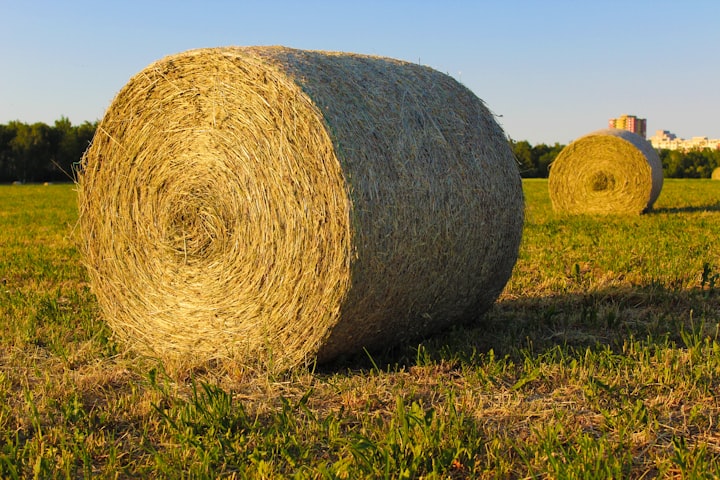Robotics : Benefits of Robotics in Hay Production
Benefits of Robotics in Hay Production

Robotics is a transformative force in agriculture, providing innovative solutions to enhance the overall efficiency of crops. In the context of hay production, integrating robotic technologies holds significant potential for sustainability. Technologies like autonomous tractors and data analytics are revolutionizing traditional farming practices.
The need to double agricultural production arises from the increasing food demand for the world population. Despite this, the International Labour Organization reports a significant decline in the number of people employed from 44% to 27% in agriculture.
Mark Lowery, director of commercial marketing, believes anything done autonomously in row crops can be applied to hayfields.
Benefits of Robotics in Hay Production:
Integrating robotics into hay production can offer several benefits, ranging from increased efficiency to improved precision:
Increased Efficiency:
The standout advantage of incorporating robotics lies in the remarkable boost in efficiency.
Autonomous tractors equipped with GPS technology can precisely navigate fields, optimizing the cutting, raking, and baling processes.
Continuous operation 24/7 reduces downtime, leading to faster hay production cycles without the limitations of human fatigue or time constraints.
This heightened efficiency translates to speedy planting, precise harvesting, and streamlined crop management.
Precision Agriculture:
The integration of modern technologies optimizes the information flow. This enables farmers to take essential measures for better crop management and resource utilization.
With multispectral cameras, drones play a pivotal role in constantly monitoring fields. They provide farmers with valuable insights into crop health and help them to identify specific areas requiring targeted interventions.
Robotics and advanced sensors give farmers real-time data on soil conditions, moisture levels, and crop health. This information empowers them to make informed decisions to ensure precision in their agricultural practices.
Labor Savings:
Robotics allows farmers to allocate human labor to more strategic aspects of hay production through automated harvesting systems.
Robots can handle bailing, stacking, and packaging, minimizing the physical workload for human workers. It also allows skilled workers to contribute to the industry's technological advancements.
Optimized Resource Use:
The shift towards eco-friendly practices along with efficient allocation of resources promotes sustainable agriculture.
GPS-guided robots reduce overlap in field operations, making bulk timothy hay production more environmentally sustainable.
Robotics enable precision agriculture practices to minimize the use of resources and reduce the environmental impact on farming activities.
Improved Crop Quality:
Automation ensures consistent and high-quality hay production.
Robots can execute tasks with more precision.
From planting seeds at optimal depths to harvesting crops, they improve the overall productivity of hay.
This consistency in quality is crucial for meeting market demands and maintaining the nutritional value of timothy hay for animals.
Applications of Robotics in Hay Production:
The use of robotics in hay production covers a range of applications, each addressing specific challenges in the farming process.
Autonomous Tractors and Equipment:
Autonomous tractors with GPS technology navigate fields for cutting, raking, and baling without human intervention. These tractors follow optimized paths, reducing overlap and ensuring efficient use of resources. Sensors and cameras collect data on overall field conditions and enable precise interventions.
Seeding and Harvesting:
Robotics is transforming the seeding process by automating precise seed placement in the soil. Automated seeders with 95% efficient sensors adjust the seeding depth and spacing for optimal germination and crop yield.
Another exceptional advancement in hay production is the introduction of autonomous harvesting machines. These robots use advanced computer vision and machine learning to identify the optimal harvest time. Autonomous rakes further streamline the process, creating uniform hay bales for storage and distribution.
Weeding and Pest Control:
Autonomous robots equipped with visual devices are 85% effective in identifying and removing weeds in hayfields.
These systems detect early signs of diseases or pest infestations and apply targeted treatments, minimizing the need for chemical interventions.
Data Analytics and Farm Management:
Integrated smart farming platforms utilize data analytics and artificial intelligence to give farmers actionable insights into hay production. These platforms collect and analyze data from various sources to offer recommendations for crop management. Farmers can make informed decisions, leading to improved productivity and resource efficiency.
Energy Efficiency:
Robotic systems designed to operate on electric power reduce the carbon effect associated with traditional machinery using fossil fuels. Energy-efficient technologies contribute to sustainable farming practices for Timothy's production.
Robotic Irrigation:
Efficient water management is important in hay production and robotics enhances this aspect through automated irrigation systems. These systems observe soil moisture levels and weather conditions to deliver precise amounts of water to the crops. It helps in conserving water and promoting optimal crop growth.
Conclusion:
Hay production demanded substantial human effort, from seeding to irrigation and harvesting. The adoption of robotics overcomes traditional methods and offers time-saving and labor-reducing solutions. Integrating these automated systems in hay production signifies a major step towards sustainable and efficient farming practices.
About the Creator
Sarah Michelle
When you talk about the content ideas, no one can help you better than Sarah Michelle. With ample experience in the field and dedication to work has been a pro in increasing the aesthetic value.
Reader insights
Nice work
Very well written. Keep up the good work!
Top insight
Easy to read and follow
Well-structured & engaging content






Comments (4)
VERY USEFUL INFORMATION
NICE
VERY GOOD
it's written well and packed with useful information.